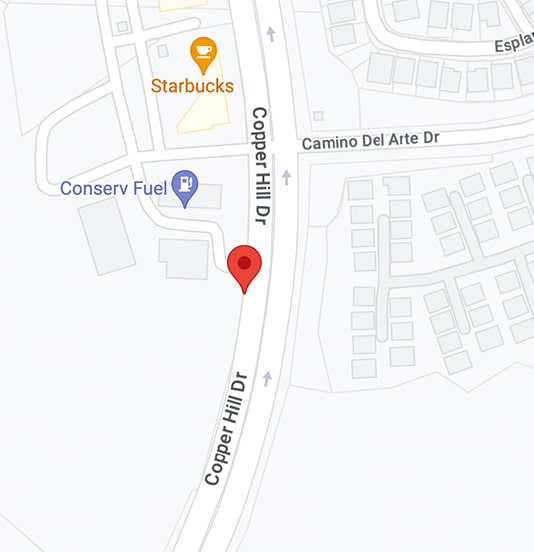A dental misalignment can make a person feel embarrassed and self-conscious about their smile's appearance. Sadly, alignment problems do more than lower the attractiveness of a smile and self-esteem. They may also make speaking, biting, or properly caring for the teeth challenging.
Several orthodontic options exist to correct jaw and teeth position. Popular among them is Invisalign. This option involves using clear, removable, plastic aligner trays to correct jaw and teeth position gradually and painlessly. Because of all the great advantages of Invisalign treatment, it is unsurprising that everybody wants them.
Unfortunately, Invisalign may not be ideal for every patient because of its specialty, functionality, and design. So, how can you then know whether you are a suitable candidate for Invisalign treatment? This blog highlights key considerations when determining the answer to this question.
The Type of Misalignment Problem You Have
When determining whether Invisalign is an ideal option for your dental problem, you must first determine the type and seriousness of your misalignment problem. You only want to undergo treatment with Invisalign if it will successfully realign the jaw and tooth position to give you a straighter, more attractive smile.
Luckily, Invisalign can rectify many of the same issues as conventional orthodontic treatments. If orthodontic issues are not severe, Invisalign treatment should be ideal. Some misalignment problems Invisalign can correct include the following:
Overbite
An overbite is a dental-related issue where the front upper teeth have excessively overlapped the front lower teeth. That makes the front upper teeth more significant compared to the front lower teeth. Although a slight overbite is normal, a more significant one could make you appear awkward and cause teeth-related issues later.
If you do not correct an overbite, the lower front teeth might begin to wear away. This can result in gum-related issues and can cause your jaw to hurt. Can an Invisalign treatment correct an overbite? Yes, it can. Consult your dental professional first.
Cross Bite
You have a crossbite if, whenever you close your mouth, a few of your upper teeth rest inside your lower teeth rather than outside. You could have a back or front crossbite based on the crookedness of your teeth. A crossbite can result from losing milk teeth too soon, an accident, or failing to care for your teeth properly.
Attempting to correct a crossbite by shifting your jaw to one side could lead to permanent facial changes. It could also chip and wear down the teeth and slow jaw growth. You can correct a crossbite with Invisalign, just like other malocclusion problems.
Open Bite
An open bite occurs when your lower and upper teeth do not touch whenever your mouth is closed. It can happen in the rear or front of the mouth. An open bite often occurs in adults and kids who like placing items like pacifiers or pencils between the teeth. It can also result from other factors such as tooth position, jaw shape, and tongue thrusting or thumb-sucking habits.
An open bite may give you a not-so-good appearance and make it challenging to eat certain foods. Also, it can crack your rear teeth in the long run or make you develop a lisp. Invisalign can assist in correcting an open bite by moving lower and upper teeth into position.
Crooked Teeth
If two or several of your teeth touch each other, you want to determine how to correct it. The amount of space left between your teeth can impact your gum health and smile. Food may become stuck in those gaps, resulting in gum disease and bad breath.
Invisalign treatment is an ideal way of closing the space in your teeth. It can close the gaps between teeth, straighten them, and restore your smile.
Underbite
You have an underbite when your lower teeth extend past your upper front teeth. Minor cases might not require treatment. However, a more severe underbite can result in dental problems such as gum disease, tooth decay, and jaw pain. An underbite can result from an injury, genes, or childhood habits like thumb sucking. This dental issue can make speaking clearly, sleeping, and eating challenging if you do not treat it. Aligners can correct mild cases of underbite.
Whether You Prefer a Discreet Dental Straightening Option
One aspect that makes Invisalign the best treatment over other orthodontic treatments is its appearance. Often, Invisalign is known as clear or invisible braces since it is difficult to see the aligners when someone has worn them. Invisalign aligners are made of a colorless plastic. That said, they easily blend in with teeth, making them an ideal choice for people who prefer to have a discreet dental straightening treatment.
In particular, Invisalign is the best option if your work entails constantly appearing in the spotlight, such as news anchoring, modeling, or acting. Even when your job does not require public interaction, Invisalign can be your option if you need discretion. With them in place, you will achieve that attractive smile you have been wishing for without putting on braces and enjoy all the other benefits this dental restoration brings.
The clearness of your dental Invisalign trays is based on how well you take care of them. Proper oral hygiene is crucial to preventing discoloration that may cloud the trays. However, you require not be concerned about this as the trays are changeable every fourteen days. Additionally, you could easily remove them whenever you want to eat or drink anything that may stain them. This helps keep your treatment new every day.
You Have All Your Permanent Teeth
Many orthodontists will not conduct cosmetic correction of teeth unless all your permanent teeth are intact. That is because they cannot predict how minors’ permanent teeth will develop. To undergo treatment with Invisalign, all your permanent teeth must be intact. Sometimes, some grown-ups still have one or two baby teeth lingering. If so, you might need additional orthodontic procedures before beginning the Invisalign treatment process.
You Are of the Right Age
You not only need to have all your permanent teeth intact before undergoing Invisalign treatment, but you also must be old enough to wear the Invisalign. There is no upper age limit to have Invisalign, meaning you can undergo Invisalign treatment to straighten your teeth at any age. However, orthodontists are not keen to provide Invisalign sets to children or young teens, irrespective of whether all their permanent teeth are intact.
This is partly because Invisalign aligner trays are detachable, and the wearer must look after them. That gives them an extra responsibility they would not have if they had traditional, non-removable metal braces.
You Are Responsible
Another reason why orthodontists consider Invisalign only for individuals over a particular age is the sense of responsibility involved. You must be committed to wearing the dental restoration for the best results. As mentioned, Invisalign aligner trays are detachable. Therefore, you may take them off anytime. At the same time, the system depends on the Invisalign remaining intact on teeth for several hours daily. Sometimes, this means you will always need to have them on your teeth, unless you are eating.
Since they are removable, some patients do not bother having them on. They might even lose the dental restorations. These patients will likely not progress further with Invisalign, since the results will stall.
If you are not devoted to straightening teeth or lose essential things easily, Invisalign will likely not be ideal for you.
Your Problem Is Straightforward
Many cases of malocclusion and crooked teeth are rectifiable with Invisalign. The Invisalign system can work perfectly for patients who have overbites, underbites, open bites, or crossbites, or people with crowded or gapped teeth. However, that does not mean it will work for everybody experiencing these problems.
Your orthodontist or general dentist will evaluate your dental case and determine whether Invisalign treatment suits you. For more intricate cases, you might need a surgical procedure. Or you might be unable to straighten your teeth without conventional metal braces.
You Practice Proper Oral Hygiene
Practising proper dental hygiene is mandatory for aligner trays. Apart from your oral cavity being healthy, you must be able to care for your aligner trays so they do not trigger infections or other issues.
Practising proper dental hygiene goes hand in hand with the consideration that a patient must be responsible for putting on Invisalign. You must wash the Invisalign regularly and care appropriately for the trays. Failure to do so might have you paying more to have them replaced.
Also, you must ensure your oral cavity is disease-free and has no other issues, and you brush routinely before an orthodontist or dentist considers you for the Invisalign treatment.
You Do Not Smoke
Since you will have the aligner trays in your mouth for a significant amount of time, you cannot use tobacco or smoke. This could interfere with the aligners themselves and dirty them. If you use tobacco or smoke more often and take your trays out while doing so, your Invisalign may not be as effective. That is because they are not in the mouth for an adequate time throughout the day.
Smoking is also incredibly unhealthy, not just for the teeth but for the whole body. If you use tobacco or smoke but wish to have Invisalign, now may be the time to stop.
Who Is Not an Ideal Candidate for Invisalign
As seen, Invisalign helps address a wide range of dental malocclusion problems. However, this treatment best addresses these issues in their mild to moderate stages. That said, it may not be an option for every dental patient. Those deemed not suitable candidates for this treatment are individuals who:
-
Have severe tooth decay and many cavities
-
Have poor dental hygiene
-
Have active gum-related disease
-
Have extreme tooth crowding
-
Have severe tooth misalignment
-
Have severely rotated teeth
-
Have severely misshapen teeth
-
Have complex malocclusions requiring tooth extractions
-
Cannot devote to proper dental care
-
Cannot devote to wearing the Invisalign as prescribed
Invisalign is not a good option for people who have missing teeth, either. That is because the treatment depends on the teeth already intact to provide adequate anchorage and stability to shift them into the appropriate position. If you have gaps in your jawbone due to missing teeth, Invisalign may not effectively shift the other remaining teeth and correctly align them.
Missing teeth can lead to unpleasant gaps in the jaw. When that happens, adjacent teeth might move out of position. Invisalign treatment may not provide satisfactory results in these cases. It is not adequately strong to shift teeth back to their right positions and align them. In cases like those, conventional orthodontic treatments might be necessary. Once the teeth have been aligned, the dentist can use a dental implant or bridge to replace the missing teeth.
The most appropriate way to establish whether you are an ideal Invisalign candidate is to see a professional orthodontist. They will perform a comprehensive consultation and exam to establish suitability.
Also, during your visit to the clinic, the dental professional can review your dental health history. They will take digital images of your teeth to assess with you. Afterward, they will discuss your treatment options, explaining whether Invisalign would suit, be practical, and benefit your case. If the dental professional determines that removable aligners cannot address your problem, they will likely recommend other alternatives.
Find an Experienced Orthodontist Near Me
Invisalign treatment has indeed gained popularity when it comes to addressing orthodontic problems. That is thanks to the advanced technology it uses and its many benefits. However, despite all that, Invisalign is still not a suitable option for everybody. Understanding whether you are an ideal candidate is crucial. It will assist you in achieving your desired dental care results effectively and safely.
At Valencia Advanced Dentistry at Copperhill Smiles, we offer high-quality services for people seeking dental treatment in Santa Clarita. If you wish to straighten your teeth and achieve an attractive smile, we can also help you establish whether Invisalign is right for you. Schedule a consultation by calling us at 661-775-7717. We look forward to assisting you in achieving the gorgeous smile you have always desired.




